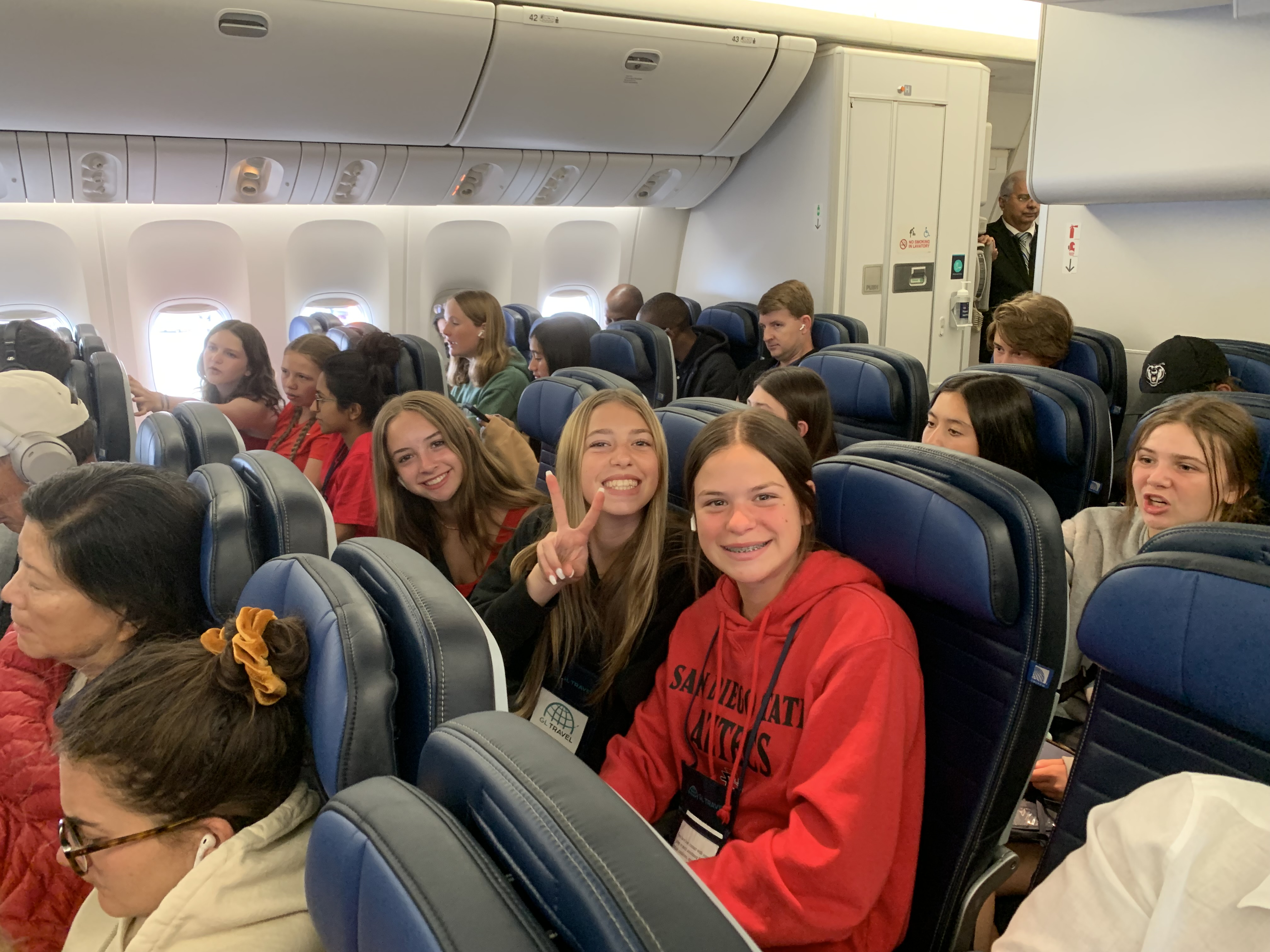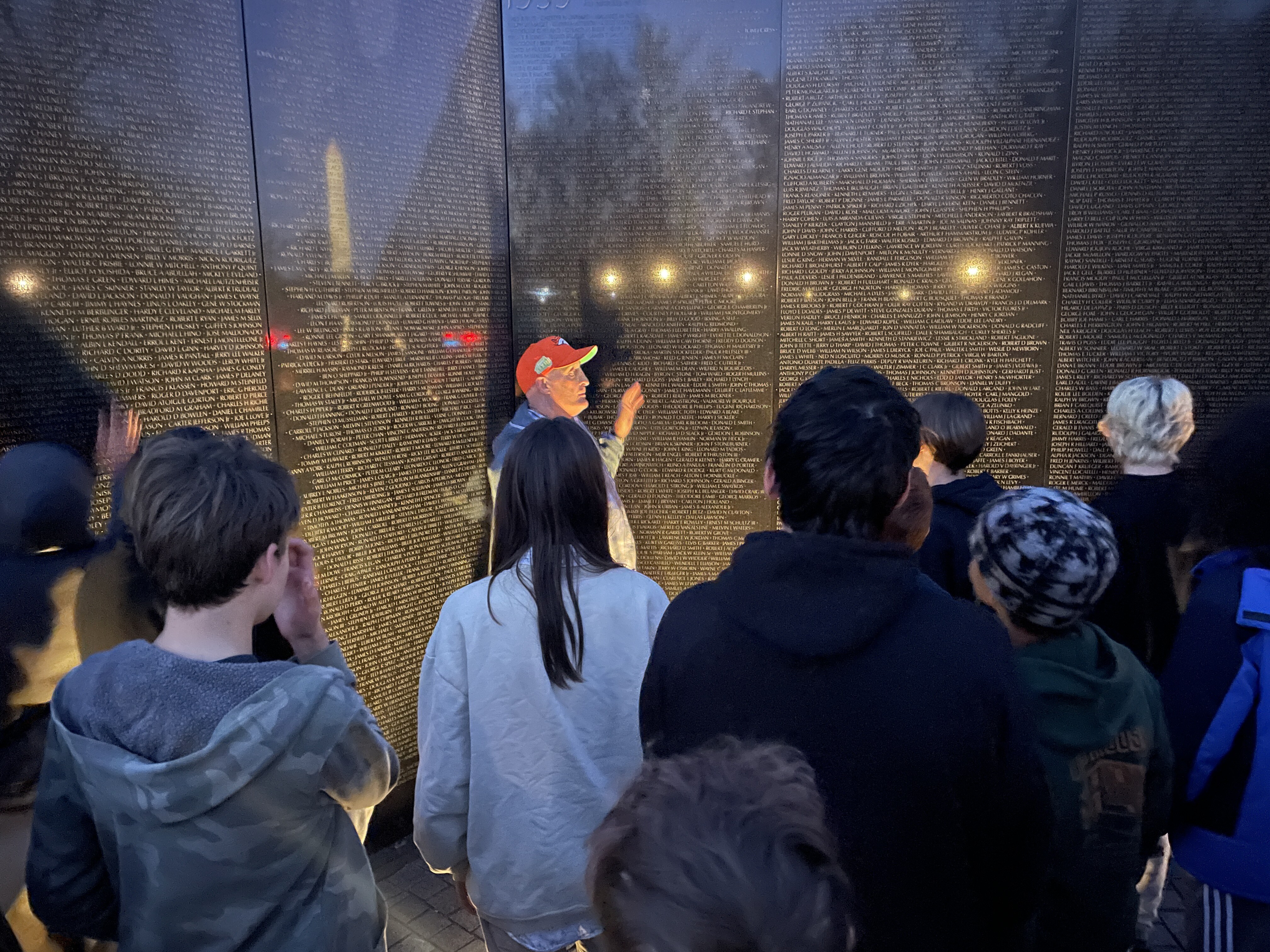7 Trip Project Ideas for Your Students

Part of a successful school trip is the learning experience for your students. While you may have key teaching objectives to cover while you lead them on an adventure in a new part of the country, you’ll also need to make it fun. Assigning learning activities is a great way to help your students learn while they participate in the various activities you have planned for your trip. It can be tricky coming up with ideas that are fun and unique in the midst of planning all the details of the rest of the trip, so we’ve compiled these seven ideas to help you jumpstart your travel lesson planning.
Trivia or Scavenger Hunt
Two of the most popular school road trip projects are trivia hunts and scavenger hunts. These two ideas are some of the easiest to employ because you can find printable fill-in-the-blank templates online, or you can make your own. With their highly customizable nature, you can use them to highlight specific things that YOU want your students to focus on.
The premise of both activities is similar, but there are slight differences. For trivia hunts, create a list of problem-solving questions about the topic or subject you’ll be studying on your trip. Students must find the answers during the trip and write them down on their papers. At the end of the trip, the person with the most correct answers wins! Having a prize to look forward to can help motivate them as well. Some teachers like to have a separate interactive hunt for each day or site.
Scavenger hunt worksheets are similar, but now the students need to collect various things. They can get ticket stubs from certain museums, take photos at particular landmarks, or find specific information at various destinations. Take care in selecting what items they need to collect: no leaves from live plants or anything else destructive! Also, to increase student engagement, scavenger hunt handouts are sometimes best done in small groups. If you’re comfortable with the idea, small groups of students having to elicit specific information from strangers can make for a fun and entertaining afternoon in a museum.
Both of these activities are especially useful for social studies-themed trips to the Historic East Coast. With so much history and so many museums, these are great ways to help them focus on what’s important at each particular destination.
Scrapbook
Scrapbooks are a great project-based learning assignment because they give the students a way to bring a little piece of their trip back with them. Like the scavenger hunts, have your students collect items like ticket stubs, memorabilia, and small souvenirs. When you return home, they can then brainstorm ideas of how to arrange these into a scrapbook of all the places they visited. Consider giving students to create a travel brochure instead of a scrapbook. For added effect, have them add blurbs about their favorite parts of the trip, what they learned at various destinations, and why they chose each item for their final product. This will give them a tangible reminder of their trip and how much fun they had!
Photo Slideshow
Photo slideshows on a PowerPoint or google slides are a great way to not only get the students excited about seeing new places but also to share the trip with others when you get back home. Have students take pictures of each activity and upload them to a master slideshow that covers each day of the trip. There are several apps that can be used to help with this. If you have them use PowerPoint notes, they can include information about what is in the photo, what they learned there, and what they most enjoyed. You can also use something like Tripcast, where all the students have uploaded their pictures to the same place, and you as the teacher, can select the best photos for each site.
After the trip, you can display a few students’ slideshows or have some of them present their own at the final meeting after your trip so parents and administrators can see how much fun you had. Make sure you hang on to a few to show prospective parents and administrators down the road what an impact the trips had on the students!
Travel Journal
Travel journals are another simple project you can assign to your students. Have them each bring a notebook or journal to bring with them on the trip. During the trip, you can provide prompts to help them think through some of your learning objectives and how the day’s activities connected to them. Each night they can write about what they did and what they learned that day and pick out the highlights from each day. When you return home, each student will turn in their journal and you’ll get to see which aspects of the trip were the most impactful. Journaling is a great activity for language arts students at the middle school or high school level.
Podcast
A unique potential project is to have groups of students create a podcast that covers your trip. There are plenty of free podcast recorder apps for their phones or computers. Most kids are tech-savvy enough to enjoy the challenge. At the end of each day, they can get together and interview each other about what they saw and what they learned. In the morning, each group can exchange their podcasts so everyone can hear how their classmates’ day went and share a unique part of their experience. To really get the most out of this activity, publish the podcasts online to give the parents back home a way to keep up with the trip. Imagine a post-trip podcast created by upper elementary students. Hilarious!
Climate Change Report
These next two project ideas are specifically for groups traveling to National Parks. The National Park Service has created many different resources for increasing the educational value of school trips. Because they offer so many learning opportunities, it’s easy to get overwhelmed with project possibilities.
If you’re visiting the Parks as part of a science unit, then a climate change project could be an interesting way to help your students see the real-life effects of climate change. For your students to get the most out of this experience, you’ll need to have your students do some research prior to leaving and develop critical thinking questions about how climate change has affected the parks. When you arrive, they can interview a park ranger and get firsthand answers. (Sidenote: it’s probably a good idea to contact the Park’s visitor center before the trip. Staffing can be an issue in some National Parks, and they may not have an extra person. Conversely, they may be able to make a naturalist available to speak to the group.)
Once inside the park, they can travel to different parts and see the affected areas and judge the extent of the changes themselves. Encourage them to take pictures and investigate to add more details for their final report once they get back home. If math skills are a focus, the assignment format rubric could look more like a math project calculating the impacts of global warming.
Habitat Project
Another great National Park project is to have your students research and examine a particular habitat. Again, some prior research will help in this project. Have them pick an animal or an ecosystem that interests them and do some initial research before leaving for the trip. Try to help them focus on things that are easy to interact with. As exciting as wolves and bears may be, they are very solitary creatures. Even if they weren’t, they’re not something your students should get anywhere near while in the parks!
While you’re in the park, encourage them to find examples of that habitat within the park’s boundaries and take pictures. Later, they can use these pictures to compare what they saw in real life with what they found in their research. Have them add physical, observable details like the heat, humidity, texture of plant life, and number of animals in the area. They can also compare some animals’ habitats in the park with their ideal habitat for more similarities or differences.
Mini-Projects
Not all projects need to be for the entire group. If you’re using chaperone groups on your school trip, letting each chaperone set daily challenges can be a great way to get kids to engage. Since each small group has a different challenge, they’ll be on the lookout to help each other, rather than to compete against each other.
One of the best ideas for these challenges is to get photos with specific content. It’s easy to set an educational challenge, but this is a good opportunity to let them stretch their artistic muscles as well. For really high levels of engagement, have your chaperones challenge the students to get pictures of members of the trip engaged in specific activities. This can lead to iconic photos that you’ll be able to share with prospective groups for years!
Projects Make Learning Fun
No one ever said a school project had to be boring. Using these project ideas to make your trip project fun for your students will get them excited about learning.
If you’re not sure which trip is right for your group, reach out to us. We’d love to help you choose a memorable trip that teaches your students valuable lessons.




